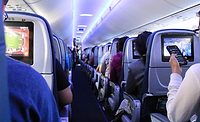Real-time locating systems as a security tool

It might not be the sexiest technology in your building, but I’d argue it’s the most important: your real-time locating system (RTLS) for people and asset tracking.
A good RTLS serves several purposes, from tracking people and equipment to helping mobilize backup support quickly where it’s needed, and RTLS technology can be a value-add for enterprise security programs with moving assets.
So how can security managers sort through technologies when it comes to RTLS?
First of all, RTLS consists of two things: signal-sending wireless tags, and a network of receivers and / or locators that pick up the signals to pinpoint the tags’ location. Many traditional RTLS systems take a one-size-fits-all approach, rely on existing WiFi networks or standardized locating theories. For straightforward environments that don’t need scalability or control over signal strength and antenna direction, traditional technology may meet their needs. In complex physical environments, aka architecturally dense settings, such as hospitals, corrections and detention centers, or mental health facilities, however, security managers should look for a solution with more flexibility.
WiFi reliance
Many traditional RTLS systems use WiFi to transmit location or duress signals. After all, WiFi is ubiquitous, user-friendly and doesn’t require a lot of cost or engineering know-how to get up and running.
But in complex physical environments, such as corrections facilities with thick concrete walls, narrow, winding corridors and several floors, WiFi can be absorbed by building materials and fail to reach locators. Why? Because WiFi travels on a 2.4 or 5 gigahertz bandwidth — neither of which has the spectrum for propagation through dense materials.
And WiFi isn’t fail-proof, either. We’ve all lost WiFi during a thunderstorm or due to other electrical interference or a service interruption. Without a backup plan, you could be looking at a major security issue.
I’ve seen installations in the RTLS space set up a system that piggybacks data signals off WiFi hotspots or access points. Creative? Sure. But this could lead to dangerous delays in location or distress signals reaching their intended targets, since piggybacked data is likely to be deprioritized — it’s like a passenger train getting stopped to allow for freight traffic to pass through.
The trouble with triangulation
Triangulation, which uses the angles between known locators or receivers to estimate a person or asset’s location, can be useful in straightforward environments. There are two issues at play here, though.
First, because triangulation relies on math and physics equations, it can take time to process and be confused by multipath or signal bounce. In some instances, alarm signals may be delayed. Second, triangulated locations can be distorted, introducing error, when signals are obstructed by dense walls or equipment.
Scalability and flexibility
Other considerations dependent on your environment are wireless tags and locator antennas.
Received signal strength indication (RSSI) is a helpful tool used in RTLS to dial in on the precise location of staff or assets. Essentially, the closer a wireless tag is to a locator, the stronger the signal; the farther away, the weaker the signal.
Say you have two hallways, where one is 200 feet long and one is 20 feet long. Signals from wireless tags in the 200-foot hallway will reach locators and supply different data because of the hallway’s length — tags closer to the locator will be strong, and tags farther away will be weaker. In a 20-foot hallway, though, each and every signal will reach the locator as similar in strength because of the shorter length of the hallway. Careful consideration should be given to your enterprise environment to determine the necessary features needed in order to receive sufficient signals.
Another consideration is antennae. Some RTLS setups use omni-directional locator antennas, which can “listen” to signals from large areas, but may lack precision in specific, defined spaces.
Large open areas such as recreation areas or cafeterias naturally require fewer locators. But when you need specificity down to a single-bed room to ensure patient or staff safety, you may need a more flexible solution that can handle wide variances in the building architecture and the impact on signal strength.
The right RTLS system can help you promote safety and efficiency in your organization. With the multitude of systems and solutions available, you’re sure to find the one that meets your specific needs for granularity, coverage and scalability.
Looking for a reprint of this article?
From high-res PDFs to custom plaques, order your copy today!






